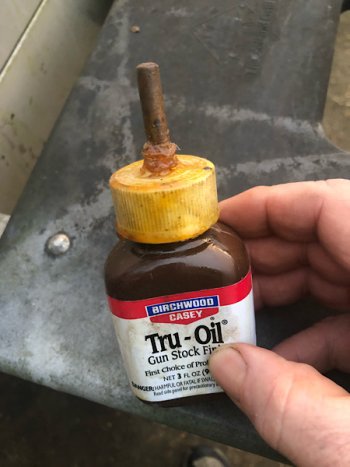It dries waaaay faster.
Years ago, I did a drying test between Tru-oil, Danish Oil (Deft brand) and boiled linseed oil.
The test was primative and who knows what it proves. Form your own opinions.
Tru-Oil has a cult like following and I don't even try to argue with those that like it. It's good stuff and I'm not slamming it. I just don't like how it dries out in the bottle *every time* before I even begin to use it up.
For my "test": I used small 2oz sample plastic cups and poured a 1/4" in each and set them on the shelf to dry.
The Danish oil dried the fastest to a fairly clear, small, hard, smooth looking puck. It had a very light amber look to it.
The tru-oil dried in about twice the time and dried to a little darker amber color then the Deft Tung oil. I doubt it would affect wood tone much but it the amber color was clearly there. It also dried to a puck shape but was wrinkled and warped. I don't think this would affect the wood but that is what happened.
The boiled linseed took more than a year to dry. It dried and cracked similar to a mud flat and was a dark yellow color. The remaining puck was wrinkled, cracked and came out of the cup in pieces. I can tell you that black powder rifle makers LOVE boiled linseed oil. It is the traditional finish and those guys are all about tradition. It leaves a very durable and tough finish. It has been around for a very long time and is proven. Gunsmiths use wood in stocks that are normally fairly dark in tone so the amber color isn't an issue. Most of those guys have some formula they use to thin it and help it dry. I don't want chemistry. I just want to slap it on and have it dry in a couple days. I threw away any boiled linseed oil I had left after that test.

